Opera, a Western theatrical art form, fundamentally integrates music with dramatic roles sung by performers. It's a collaborative creation between a composer and a librettist, blending performing arts like acting, set design, costumes, and occasionally dance or ballet. Performances typically occur in opera houses, accompanied by an orchestra or smaller musical ensemble, usually led by a conductor since the early 19th century. While closely related to musical theatre, opera maintains a distinct identity.
1902: Debussy's Pelléas et Mélisande Premieres
Claude Debussy's unique opera, Pelléas et Mélisande, premiered in 1902. It featured a prominent role for the orchestra, no traditional arias, and a mysterious, understated drama that contrasted with Wagner's style.
1904: Janáček's Jenůfa Premieres in Brno
Leoš Janáček's opera Jenůfa, often called the "Moravian national opera," premiered in Brno in 1904.
1909: Schoenberg Composes Erwartung
Arnold Schoenberg composed Erwartung in 1909, showcasing his early exploration of operatic modernism with heavy use of chromatic harmony and dissonance.
1911: Stravinsky's Petrushka
Igor Stravinsky composed the music for the ballet "Petrushka" in 1911.
1913: Neoclassicism in Opera
In 1913, Ferruccio Busoni wrote the libretto for his neoclassical opera "Arlecchino," and Igor Stravinsky composed the ballet "The Rite of Spring."
1914: Stravinsky's The Nightingale
Igor Stravinsky composed "The Nightingale" in 1914, inspired by Rimsky-Korsakov.
1916: Stravinsky's Renard
Igor Stravinsky produced "Renard," a burlesque in song and dance, in 1916.
1916: Jenůfa's Prague Premiere
The successful Prague premiere of Janáček's Jenůfa in 1916 brought him international recognition and access to major opera stages worldwide.
1917: Premiere of Arlecchino
Ferruccio Busoni's neoclassical opera "Arlecchino" was first performed in 1917.
1918: Stravinsky's The Soldier's Tale
In 1918, Igor Stravinsky produced "The Soldier's Tale," described as a piece "to be read, played, and danced."
1922: Stravinsky's Mavra
Igor Stravinsky composed "Mavra" in 1922.
1924: Erwartung Premieres
Schoenberg's Erwartung premiered in 1924.
1925: Berg's Wozzeck Premieres
Alban Berg's opera Wozzeck premiered in 1925.
1927: Stravinsky's Oedipus rex
Igor Stravinsky's opera-oratorio "Oedipus rex" premiered in 1927, marking a culmination of his neoclassical period.
1935: Porgy and Bess
"Porgy and Bess," influenced by jazz, premiered in 1935 and later became part of the opera repertory.
1935: Berg Dies, Lulu Incomplete
Alban Berg died in 1935, leaving his opera Lulu incomplete.
1937: Koroğlu Premieres
The Azerbaijani composer Uzeyir Hajibeyov's opera Koroğlu premiered in 1937, representing one of the new national operas emerging in the early Soviet Union.
May 1939: Ai-Churek Premieres in Moscow
The first Kyrgyz opera, Ai-Churek, premiered at the Bolshoi Theatre in Moscow in May 1939.
1945: The White-Haired Girl Premieres
The White-Haired Girl, a Chinese contemporary classical opera in the Western style, premiered in 1945.
1945: Arshak II Fully Staged
The first known Turkish opera, Arshak II, composed by Tigran Chukhajian, was fully staged in Armenia in 1945.
December 1951: Amahl and the Night Visitors Broadcast
On December 24, 1951, the live broadcast of Gian Carlo Menotti's "Amahl and the Night Visitors" marked a milestone for opera broadcasting in the U.S.
1951: Stravinsky's The Rake's Progress
Igor Stravinsky composed the 18th-century-style opera "The Rake's Progress" in 1951.
1952: The Most Happy Fella
The quasi-operatic "The Most Happy Fella" premiered in 1952 and was later revived by the New York City Opera.
1956: Candide
"Candide," with its lyrical passages and opera parodies, opened on Broadway in 1956 and later entered the opera repertory.
1967: Roudaki Hall Opens in Iran
The construction of the Roudaki Hall in Iran in 1967 paved the way for staging a wider range of works, including operas, and contributed to the growth of opera in the country.
1969: Tommy
The rock-influenced musical "Tommy," employing operatic conventions, premiered in 1969.
1971: Jesus Christ Superstar
"Jesus Christ Superstar," a rock opera using operatic conventions, premiered in 1971.
1980: Les Misérables
"Les Misérables," employing operatic conventions, premiered in 1980.
1983: Messiaen's Saint François d'Assise Premieres
Olivier Messiaen's lengthy sacred drama, Saint François d'Assise, premiered in 1983 and garnered significant attention.
1992: Tosca Broadcast
In 1992, a live broadcast of "Tosca" from its original Roman settings and times of day marked another milestone in opera broadcasting.
1996: Rent
"Rent," using operatic conventions, premiered in 1996.
2004: Disparity in Opera Houses
As of 2004, Germany had about 80 year-round opera houses, compared to none in the U.S., highlighting a disparity influenced by public funding in Europe.
2005: La Scala Funding
In 2005, La Scala received 25% of Italy's total state subsidy for the performing arts, highlighting the role of public funding for opera houses in Europe.
2006: Spring Awakening
"Spring Awakening," using operatic conventions, premiered in 2006.
2006: Live HD Broadcasts Begin in Opera Houses
In 2006, a number of major opera houses started offering live high-definition video transmissions of their performances to cinemas worldwide.
2006: Metropolitan Opera HD Transmissions
The Metropolitan Opera began live high-definition video transmissions to cinemas worldwide in 2006.
2007: Met Performances in Cinemas
In 2007, Met performances were shown in over 424 theaters in 350 U.S. cities.
2007: Tristan und Isolde Download
The Glyndebourne Festival Opera's 2007 production of "Tristan und Isolde" was the first opera made available for online digital video download.
March 2008: San Francisco Opera Video Transmissions
San Francisco Opera began prerecorded video transmissions of its performances in March 2008.
June 2008: Expansion of Video Transmissions
As of June 2008, approximately 125 theaters in 117 U.S. cities carried San Francisco Opera's video transmissions.
2009: Opera Performances Go Digital
By 2009, complete opera performances became available for download and live streaming online.
2009: Glyndebourne Online Download
In 2009, the Glyndebourne Festival Opera offered its first online digital video download of a complete opera production.
2011: Aging Opera Audience
In 2011, the Metropolitan Opera reported an average audience age of 60, reflecting a trend of older audiences for classical music.
July 2012: Free Will Premiere
In July 2012, the first online community opera, "Free Will," premiered at the Savonlinna Opera Festival.
2012: Natasha, Pierre & The Great Comet of 1812
"Natasha, Pierre & The Great Comet of 1812," employing operatic conventions, premiered in 2012.
2012: Arts Council England Funding Analysis
Between 2012 and 2015, the Arts Council England analyzed its funding for major opera and ballet companies, setting recommendations and targets.
2013: Glyndebourne Online Streaming
In the 2013 season, the Glyndebourne Festival streamed all six of its productions online.
February 2015: English National Opera Funding Threat
In February 2015, the Arts Council England threatened to withdraw public funding from the English National Opera due to concerns over its business plan.
2017: English National Opera Funding Deadline
The Arts Council England set a 2017 deadline for the English National Opera to address its business plan concerns or risk losing public funding.
2018: Efforts to Attract Younger Audiences
By 2018, efforts to attract younger audiences resulted in a slight decrease in the average age at the Met (58), while Berlin State Opera and Paris Opera reported younger average ages of 54 and 48, respectively.
Mentioned in this timeline
The Union of Soviet Socialist Republics USSR existed from to...
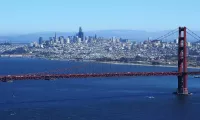
San Francisco is a major commercial financial and cultural hub...
Germany officially the Federal Republic of Germany is a Western...
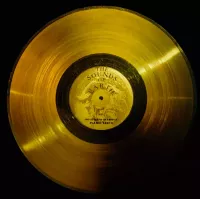
Music is a cultural universal involving the arrangement of sound...
Italy officially the Italian Republic is located in Southern and...
Iran officially the Islamic Republic of Iran and historically known...
Trending

1 month ago Timothée Chalamet discusses having children, Kylie Jenner reportedly hurt by his interview comments.

6 months ago Carrie Coon juggled 'White Lotus' and 'Gilded Age' with only 48 hours break.
Portland Oregon is the state's most populous city situated in the Pacific Northwest at the junction of the Willamette and...

7 months ago DiCaprio Breakup Resurfaces, Murphy & Craig in Talks for Chazelle Film.
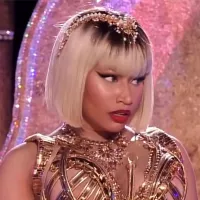
1 month ago Trump Threatens US Military Action in Nigeria; Nigeria Rejects the Intervention
2 months ago Carter Hart Signs with Vegas Golden Knights After Acquittal, Gets Second NHL Chance
Popular

Candace Owens is an American conservative political commentator and author...

Ilhan Omar is an American politician currently serving as the...

XXXTentacion born Jahseh Dwayne Ricardo Onfroy was a controversial yet...
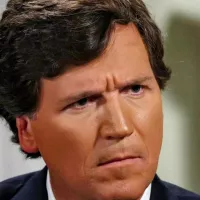
Tucker Carlson is an American conservative political commentator known for...

Charles James Charlie Kirk was a prominent American right-wing political...
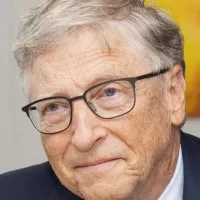
Bill Gates an American businessman and philanthropist revolutionized personal computing...
